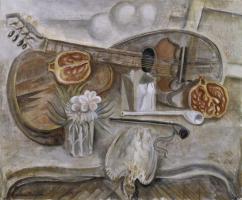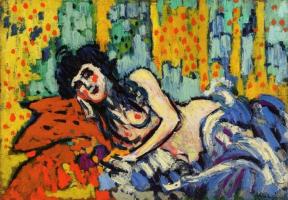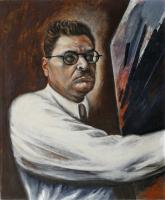Monet's Water Lilies: Meaning and Analysis
The Water Lilies series by Claude Monet (Nymphéas in French or Watter lilies in English) It was made between the years 1898 to 1926. Almost three decades of the painter's life were dedicated to this motif, inspired by his garden in Giverny.
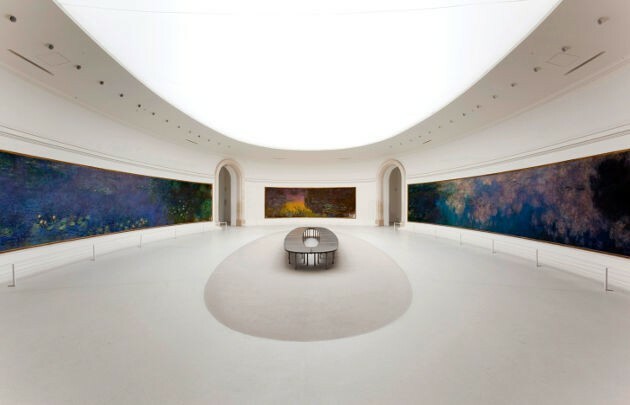
It has more than 250 pieces made in oil on canvas, distributed around the world. Among them, the group of almost forty large format canvases, eight of which are in the Musée de La Orangerie in Paris arranged according to the way Monet envisioned them. There is also a triptych located in the Museum of Modern Art in New York.
Analysis of Lily pads
The series of Lily pads accompanies Monet in the last three decades of his life. By then, impressionism had already achieved an important recognition, although there was also a fatigue in the market.
We must remember that those last years of Monet (from 1898 to 1926) coincided with a revolution in art. From the time Monet began to paint the series until he finished, expressionism, Fauvism, cubism and abstraction appeared. Perhaps that is why the consecration of this series was not instantaneous.
Due to the length of the series of Lily padsWe will dedicate the following lines to the monumental canvases that are exhibited in the Musée de l'Orangerie and MoMA.
These canvases have a set of characteristic elements, in addition to the format. On the one hand, neither the shore of the lake where the water lilies lie nor the line of the horizon can be distinguished in them, which offers a clue to the painter's purpose. On the other hand, Monet's style becomes more and more demanding for the viewer. Let's look at the matter in greater depth.
Collection of the Musée de l'Orangerie, Paris, room 1

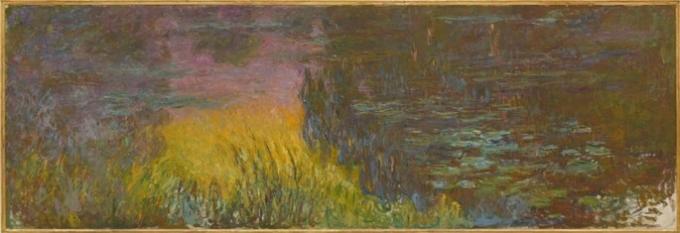


Collection of the Musée de l'Orangerie, Paris, room 2




The style of the Lily pads monumental
Researchers Hugh Honor and John Fleming say in their book History of art, that Monet still intended "to expose an immediate experience of nature", and that is how he conceived not only each canvas of the Lily pads large format, but also its arrangement in space.
These researchers still see in Monet "the exquisite brushwork, the delicate and subtle chromatic harmonies and the wide and dispersed compositions of the Lily pads". To this they add the following words:
These panoramas of Monet from on high, practically outside precise spatial limits, of the surface of the pond and what is perceived through it, are transformed into tremulous and impalpable glazes color. The natural world dissolves into almost abstract configurations of vibrant light and atmosphere. The implications of these paintings were, in fact, as radical as those of Picasso ...
With these words, Honor and Fleming interpret the maturity of Monet's style that, far from what he could think, he does not stay tied to his past, but he risks for a more diffuse brushstroke, thoughtful. He no longer seeks only to capture the moment as a light phenomenon, but also the density of the inner experience, as if the mirror of water on which the water lilies float was also the mirror of the soul's own figurations in search of stillness.

Close to abstraction through the elimination of the line and the vaporization of the contours, Monet shows himself less complacent but more focused on himself, which could have been the cause of the little attention that these monumental pieces deserved in the moment of him.
Monet was taking a deliberate risk. In a sense, he did not think only of the result of a painting as a singular phenomenon, not at least in the series of monumental canvases. He thought of a concept and in the necessary conditions to be able to appreciate it. We could almost say that Monet comes very remotely close to an installation idea. He conceived the work not as a single object but as a joint experience.
The Lily pads large format as a museum project
Since 1897 Monet had dreamed of the large-format water lily project. As early as 1909, the idea of encompassing all the walls of a room began to take shape. He imagined that they were suspended in the air in and around a room, in such a way as to allow the viewer to immerse themselves in this fantastic garden created by his brush.
In this regard, Monet said he was tempted by the idea of these canvases wrapping the interior of a room, to he would produce the illusion of being immersed in those scenes, without horizon or shore, and he hoped that that effect would translate in a haven for meditation and peace, as a letter dated June 1909 attests.

The idea was that the pieces were arranged in a room in 360º to create an immersive effect. For this reason, this idea of Monet, carried out in the Musée de la Orangerie, deserved to be called the Sistine Chapel of Impressionism.
See also Impressionism: characteristics, works and most important artists.
History of the series Lily pads
Giverny's garden

Since 1883 Monet had settled in a house in Giverny with his second wife and their children. Giverny was a quiet part of Normandy. That house had a water inlet and a fairly large space. This allowed Monet to create an artificial lake, build a Japanese-style bridge, and plant exotic greenery. Suspended in that water mirror were his water lilies, which he captured according to the light and atmospheric variations of each day.
See also Claude Monet and his works.
Blindness as a threat, creativity as an option
Towards the first decade of the 20th century, Monet began to suffer from cataracts. By then he had painted many pieces of the series the Lily pads, but it was only from 1914 when he developed the project of the monumental canvases conceived for a circular or elliptical room. Of these he painted just over four dozen.
An offering to peace
The First World War had already started in 1914, before Monet started this new section of the series. They say that the painter, although he lived far from the combat zone, could hear the noise of the trains with ammunition. The international conflict was leaving Europe plunged into a great depression.
By 1918, the end of the war was near. After the armistice was signed on November 11, 1918, Monet wanted to celebrate it by donating to the French State a selection of eight canvases from his large-format series, conceived as a monument to peace. It is this collection that is in the Musée de la Orangerie.
References
- Brodskaya, Nathalia: Monet. New York: Parstone International.
- Honor, Hugh and John Fleming: History of art. Spain: Reverte. 1986.
- La Orangerie Museum. Official website. Recovered from musee-orangerie.fr

University professor, singer, Bachelor of Arts (Cultural Promotion mention), Master of Literature Compared by the Central University of Venezuela, and PhD candidate in History at the Autonomous University of Lisbon.

